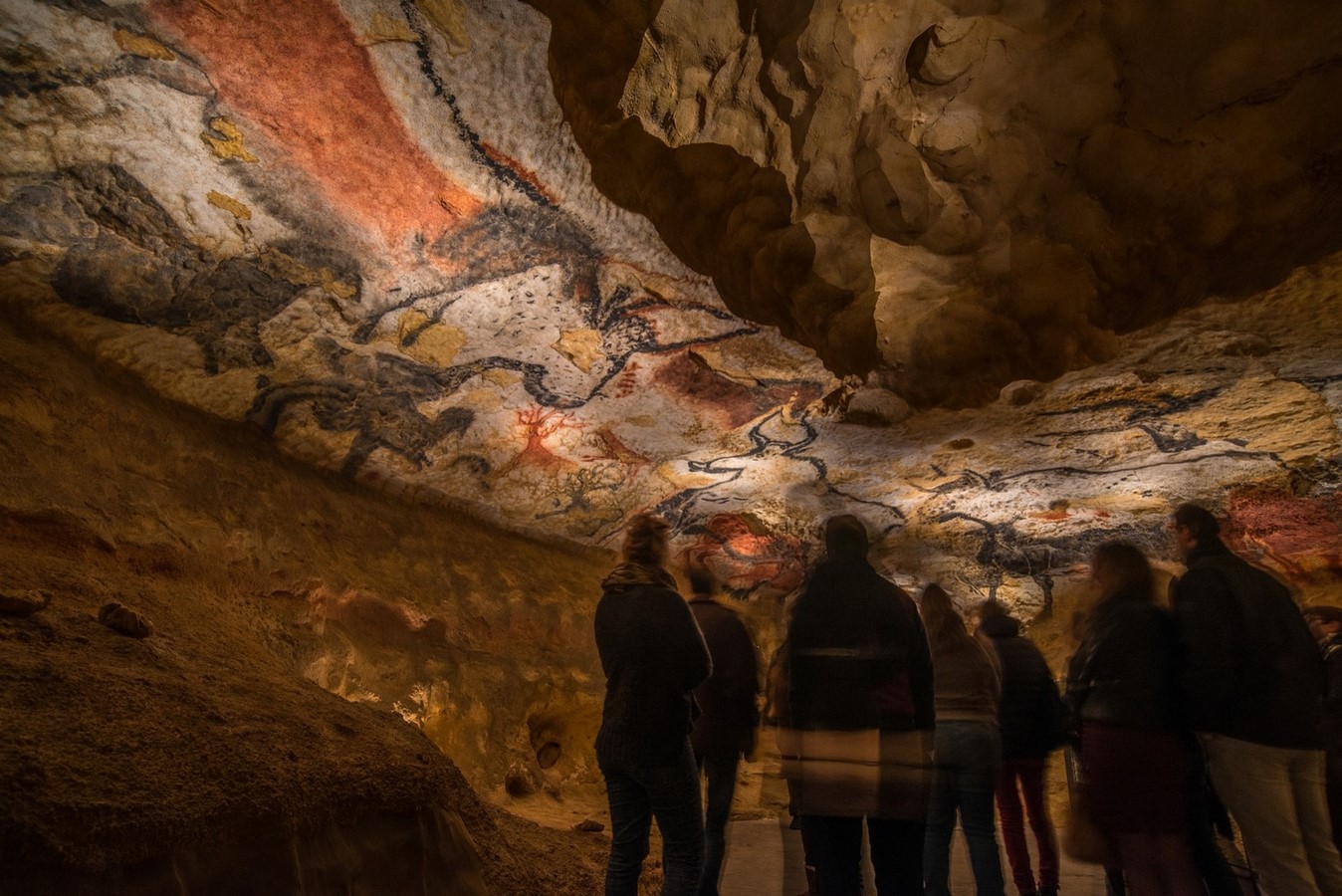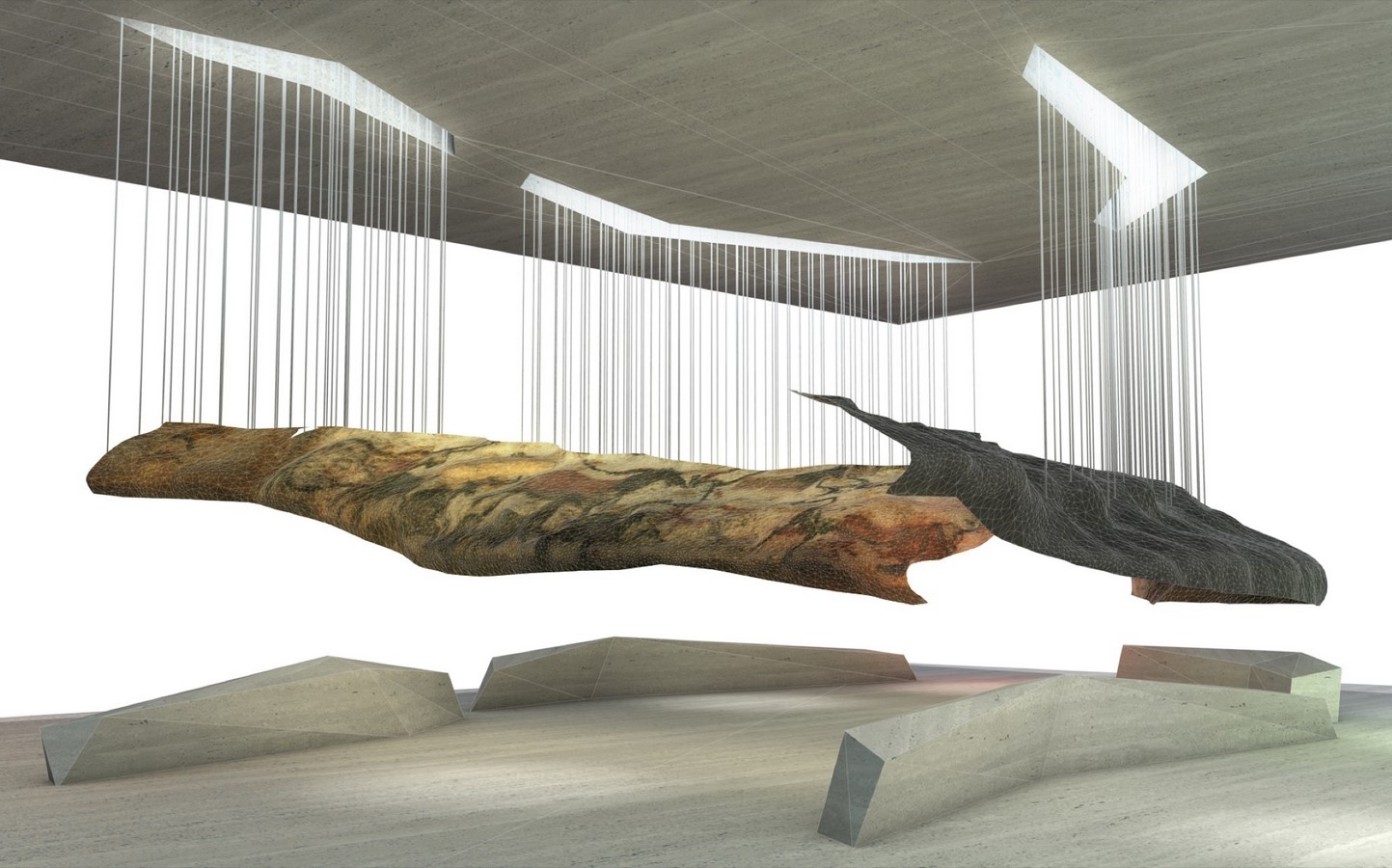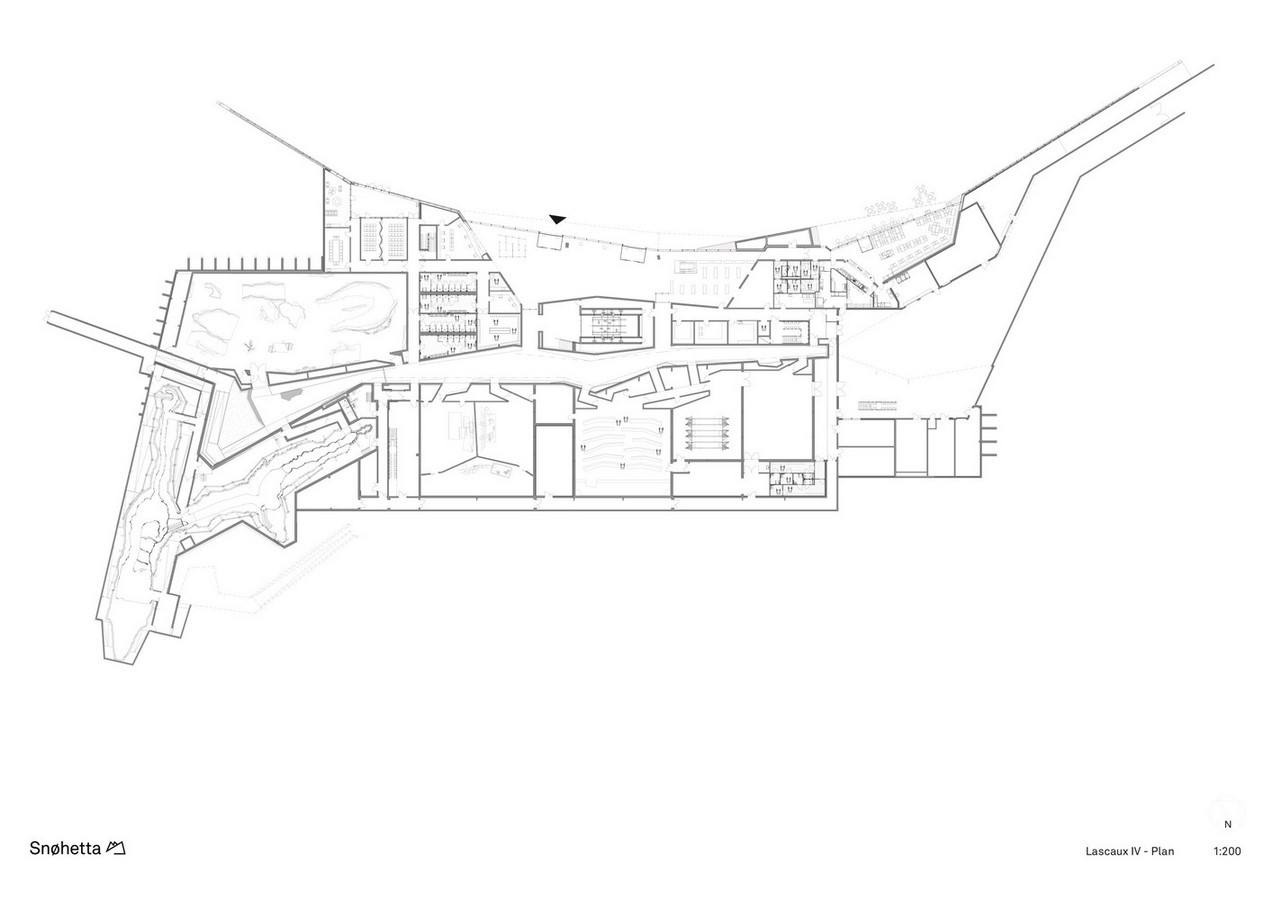Lascaux Iv the International Centre for Cave Art Interiro

"There were details like clothing, hairstyles and the fragile objects that inappreciably ever survive for the archaeologist—musical instruments, bows and arrows, and torso ornaments depicted as they were worn. … No amount of stone and bone could yield the kinds of data that the paintings gave and then freely."
― Mary Leakey, Paleoanthropologist
Be fore there was art, there were cavern paintings. Anthropologists have e'er considered discovering cave paintings as the most significant finds for any group, culture or region. Ane such discovery was fabricated with the Lascaux cave paintings, stumbled upon accidentally in 1940 by 4 teenagers and their dog. More than than 600 wall paintings adorn the interior walls and ceilings of the Lascaux caves and are the combined endeavor of many generations, working for over or close to virtually two millennia. With connected argue, the age of the paintings is at present mostly estimated at close to 17,000 years, and then it was no surprise when the Lascaux cave was declared a UNESCO Earth Heritage site and preserved in the original pristine dazzler and sophistication and hence, are most oft regarded as the prime number example of upper-palaeolithic art and culture.
Lascaux IV by Snøhetta showcases the most contempo replica of the Lascaux cavern (Lascaux being the original, Lascaux II and Iii, the initial replicas). Built artificially as a public museum, along with a visitor centre and supporting installations, it flaunts the brilliance of prehistoric fine art and the lives of the people who worked on them. With several secondary installations, Lascaux IV also exhibits the preparation piece of work that underwent for creating the elaborative replicas of the original cave that now beautify the galleries of this museum.

Replicating 17000-yr-old Stories
Some genius of the forgotten age in one case decided to start a tradition that would follow down generations, to make imprints from haematite and charcoal on the jagged and precipitous interiors of a cave in Montignac, France. He, or possibly she, sealed the fate of their entire band of wanderers and hunters the moment they had an epiphany to wander the caves and decorate them with depictions of aurochs, equines, horses and deer. For close to 2000 years, possibly several unlike bands used to get together at the same spot to finish what the ones before them had started, and meanwhile, exchanging their cognition, tools and stories to create a shared consciousness near the world around them. Their vision had risen from the desert. Now they say it is a wonder of the prehistoric world.

The cave replica at Lascaux IV is chosen the Facsimile. Designed and curated carefully to the near minute details to replicate the Lascaux Cave. From the paintings themselves to the texture and downwards to the climate of the gallery. Everything has been carefully measured, fatigued, made and simulated for the best possible replication of the original caves. For anyone walking through the Lascaux cave 17000 years ago, the sight would've been breathtaking and about surreal to behold. The humidity, damp air and stench of fat oil lamps would take filled the cavern'due south environment, and the remainder, by the people of the upper-palaeolithic of that time and historic period creating stories and shared behavior.

Cavern meets Physical
There is an enigmatic quality in the spaces carved out by Snøhetta. Every bit a event of which Lascaux IV feels monolithic and organic. For example, the orientation zone between exhibitions , where 1 can feel a singular emotion while standing nether the triple-meridian book with light leaking from the top, reminding oneself of standing at the bottom of a canyon or an open cavern. Similar spaces take readily been modelled by the architect, with remarkable ease and precision. Looking at the floor programme, it becomes apparent how the builder wants the public spaces and forms to menstruation organically and feel natural and intuitive to guide oneself through them, like a river around a boulder, seamless and unbounded. Chaos and Guild seem to be the guiding force backside the effectiveness of the layout. Quite similar to a rock symphony that builds upward orderly to the chaotic climax, not even a single space can exist defined as simplistic in any manner. Instead, they're a collective sum of geometrical oddity stitched together past the constant stream of people visiting these spaces.



Scenographic Hues
The scenography of Lascaux IV speaks volumes about the setting, the surrounding landscape, and the story of Lascaux as a whole. The exceedingly neo-modern approach to forms and materiality creates a metaphoric bridge that connects i to the 14000 years worth of history in less than 1400 paces of an experiential journey starting from the terrace of the company centre and catastrophe in the final orientation zone. Everything that lies in the betwixt is a story that one lives. The contrasting hues of the colourful landscape with the monotonic linear geometry, which is sculpted in concrete, sits together perfectly, complementing each other and bringing out the best of both ends of the spectrum. The playful approach to light and shadow and the stark dissimilarity of geometry amongst the forms of Lascaux 4 feels out of identify from the surrounding town, however somehow acts like the final slice of a puzzle that fits flawlessly, and suddenly everything makes sense.

References:
Courtice, D. (2017). Lascaux 4 / Snøhetta + Duncan Lewis Scape Compages . [Digital] Available at: https://images.adsttc.com/media/images/58e2/4906/e58e/ceae/b200/060b/large_jpg/2012119_OS_N232.jpg?1491224833 [Accessed xx November. 2021].
snohetta.com. (n.d.). Lascaux IV: The International Centre for Cave Art . [online] Bachelor at: https://snohetta.com/projects/322-lascaux-four-the-international-centre-for-cave-art
Isle of mann, C. (2017). [Digital] Available at: https://images.adsttc.com/media/images/58e2/4798/e58e/ceae/b200/05fb/large_jpg/2012119_OS_N250.jpg?1491224468 [Accessed 20 November. 2021].
Snohetta (2017). Floor Programme . [Digital] Bachelor at: https://images.adsttc.com/media/images/58e2/4a70/e58e/ceae/b200/060f/large_jpg/2012119_OS_N215.jpg?1491225194 [Accessed 21 Nov. 2021].
Snohetta (2017). The orientation zone . [Digital] Available at: https://snohetta.com/projects/322-lascaux-4-the-international-center-for-cave-fine art [Accessed nineteen November. 2021].
Boegly + Grazia photographers (2017). Lascaux Iv / Snøhetta + Duncan Lewis Scape Architecture . [Digital] Available at: https://images.adsttc.com/media/images/58e2/47f5/e58e/ce48/a300/0318/large_jpg/2012119_OS_N307.jpg?1491224560 [Accessed 21 November. 2021].




Source: https://www.re-thinkingthefuture.com/case-studies/a6089-lascaux-iv-the-international-centre-for-cave-art-by-snohetta-cave-meets-concrete/